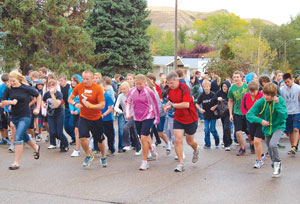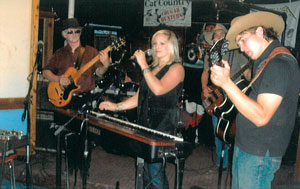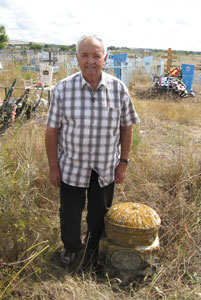
On Wednesday, September 28 staff and students from DVSS participated in the Terry Fox National School Run Day 2011.
The goal of the event is to raise both awareness and money for cancer research.
The day began with an assembly in the gym where staff and students listened to moving stories from Principal Curtis LaPierre and guest speaker, Mrs. Barb Travis.
Travis, who some students know as a substitute teacher, described her experience with cancer.
Just five months after receiving a mammogram, Travis found a lump on her chest and pulled out of her first bodybuilding competition.
She had the lump removed by a cancer specialist, although the doctor she initially saw wanted to wait and observe.
The cancer persisted.
In April 2007, Travis was diagnosed with stage one breast cancer.
With surgery and sixteen radiation treatments the cancer was beaten.
Two months later, she competed in her first bodybuilding competition and will compete in the national championships in two weeks.
Travis ended with a poem composed by her daughter entitled C Stands for Courage.
Students then braved the damp weather and began the run, which lasted until they ran eight laps around the road that encircles the DVSS.
Afterwards, everyone enjoyed a barbecue provided by Maryam Asef, owner of the Drumheller Fas Gas.
Associate Principal Brad Treske and teacher Ryan Hatch put their hair on the line to encourage students to reach their fundraising goal.
If students raise $3000, Mr. Teske will wax his legs. At $5000 Hatch will undergo the painful process of waxing his chest.
Student Sam Brown has made a considerable effort to see that the two will soon be sans hair. Brown has raised over $650.
The fundraiser ends today, but the search for a cure continues.























